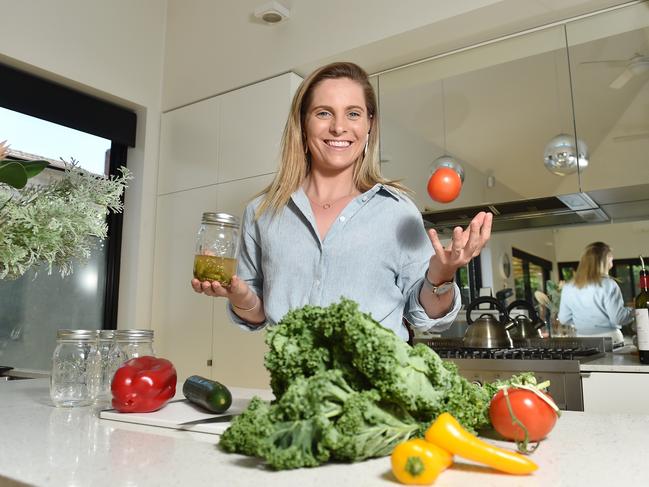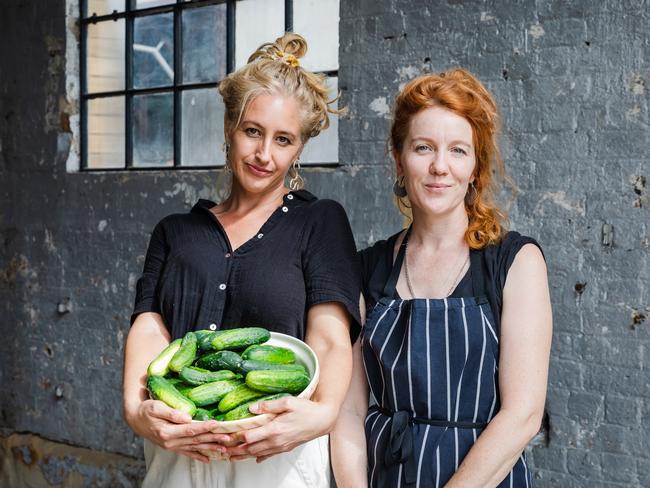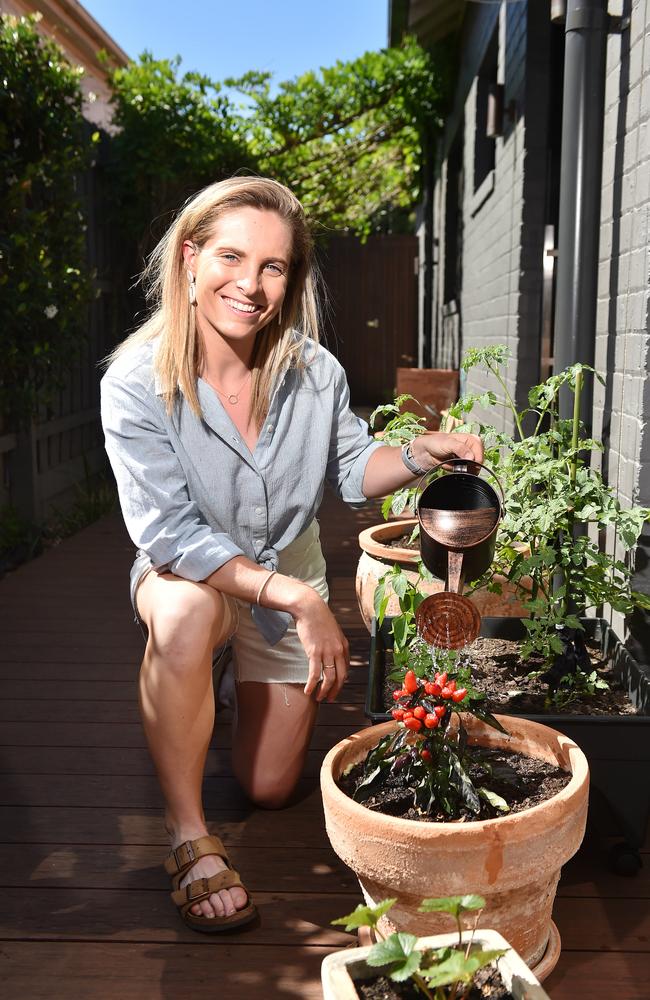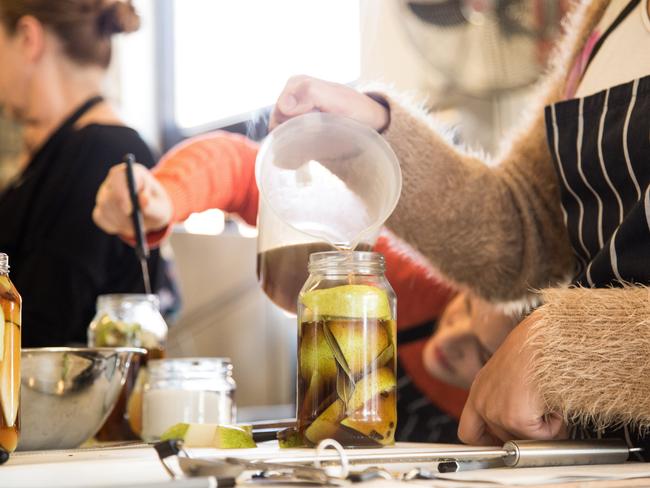Five ways to make more food out of your weekly supermarket shop
We could all learn to be more frugal in the kitchen, as Aussie cricketer Sophie Molineux found out. See how.
SmartDaily
Don't miss out on the headlines from SmartDaily. Followed categories will be added to My News.
As the Omicron outbreak disrupts supply chains across the nation, becoming more self-sufficient in the kitchen has distinct appeal.
Whether it’s pickling to save limp produce for a rainy day, or a sourdough starter to stock the bread box between grocery runs, there’s something reassuring about seizing control of your own food supply – even to a minor extent.
Many Australians dabbled in kitchen DIY as a lockdown hobby, and there are good reasons to keep it up post-pandemic, particularly as a way of cutting down on waste, trimming back food miles, and reducing our reliance on supermarkets.
With a predicted global food shortage of over 50 per cent by 2050, at current production rates, we could all learn to be more frugal in the kitchen.

Online searches for sourdough starter kits and pickled cucumber recipes have shot up by more than 500 per cent and 1000 per cent respectively since pre-Covid times, according to analysis by Semrush, while searches for pickled onion recipes have surged by almost 5000 per cent.
Sydney cafe-based cooking school, Cornersmith has seen a strong uptake of pickling and preserving workshops, and according to workshop co-ordinator Jaimee Edwards, they’re drawing a younger demographic.
“Covid has highlighted food insecurities and how precarious the system actually is,” she says. “If you can take what you’ve got growing in the garden, or what’s going cheap in the supermarket, and squirrel it away, it’s going to serve you well.”

While home economics in its 1950s heyday was viewed largely as a means of grooming women for their inevitable lives as housewives and mothers, today, rediscovering Grandma’s domestic skills could be a future-ready practice.
“When you think about climate change, these are skills for the present and the future,” Edwards says.
Melbourne-based Australian cricketer Sophie Molineux took up pickling and sourdough baking during her city’s lengthy lockdowns, a hobby she shared with housemate and teammate Ellyse Perry.
The 23-year-old has since been dabbling in growing her own vegetables and herbs, in between training for the ICC Women’s World Cup in March.

“Spending more time in the kitchen has taught us to change our ways,” Molineux says. “We’ve been cooking and eating as freshly as we can, and trying to make more things from scratch, rather than buying everything and taking shortcuts.”
And although her prospects as a contemporary woman are far broader than those of her predecessors, Molineux says embracing the methodical simplicity of self-sufficiency is a soothing adjunct to the pressures of modern life.
“You gain an extra little bit of control,” she says.
“I’ve had an opportunity to stop and realise the amazing skills that both my nans have.”
Keen to dabble in kitchen DIY? Here are five projects to get you started.
Yoghurt
Plastic tubs and overpriced squeezy pouches be gone. All you need to keep a steady supply of yoghurt in your fridge is milk on the brink of spoiling, or a packet of powdered milk. A scoop of your last batch of yoghurt, mixed into the milk, will unleash live cultures which feast on the lactose sugar in the milk. Methods and recipes abound online, but essentially, the mixture needs to be kept warm in a thermos for seven to 12 hours for the bacteria to work its magic, producing lactic acid which thickens the milk and lends a tangy yoghurt taste – ready to dollop over muesli, or sweeten with homemade jams and preserves.
Pickling and preserving
The UN estimates that one third of all food produced globally ends up going to waste, much of this in household bins. Over-ripe fruit and limp forgotten vegetables bulk up these statistics, but with a little TLC, these unloved foods can be reborn into something far more appetising. Virtually any fruit or vegetable can be picked and fermented, from classic cucumbers, to avocado and blueberries. Add vinegar, sugar, salt and spices, and you’ll have a pantry packed with produce, year-round, with a hit of probiotic goodness to boot.

Kombucha
A healthier soft drink alternative, this probiotic-rich fermented tea can be costly to buy, but a pittance to make. A combination of water, sugar and tea bags, the magic ingredient in kombucha is a symbiotic culture of bacteria and yeast, or SCOBY. This culture will grow on its own within a kombucha mixture in about 2-4 weeks, can be bought as a starter, or scooped out of an existing brew. Once you have this slimy, gelatinous mother ingredient, you can use it as a base for your future brews, so you’ll always have a batch of kombucha at the ready.
Nut milk
It may not be feasible for city-dwellers to keep a pet goat, but there’s another way to maintain a DIY milk supply. Homemade milk can be squeezed from macadamias, almonds and cashews, with most recipes calling for nuts to be soaked overnight, then blended and strained, to produce a fresh, white, plant-based milk alternative. The leftover pulp needn’t go to waste. It can be dried and blitzed into nut meal for baking, consumed damp in a granola mixture, or as an ingredient in homemade energy bars.
Sourdough
Like a pet, a sourdough starter needs food and attention, and offers great comfort in return. It involves a mixture of flour and water, fed with fresh flour at intervals, over about a week. Treated kindly, it will ferment, bubble and grow, providing a ready-made rising agent for flavoursome homemade bread.





